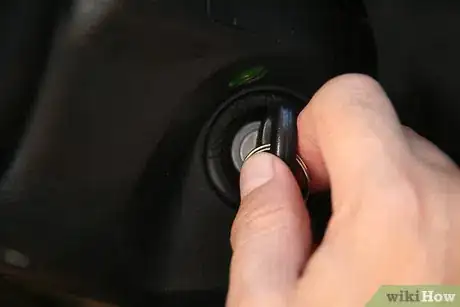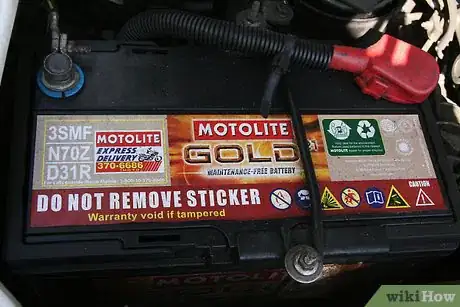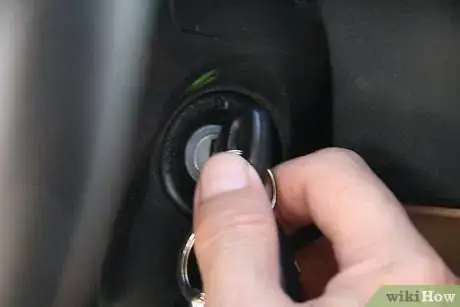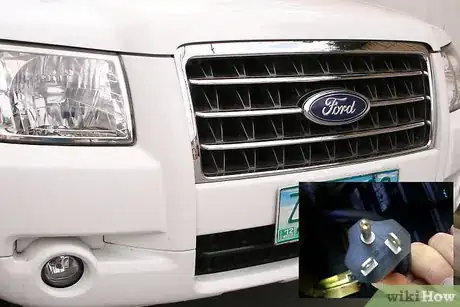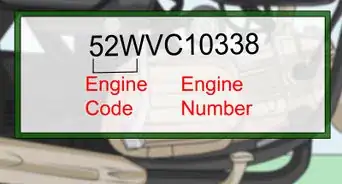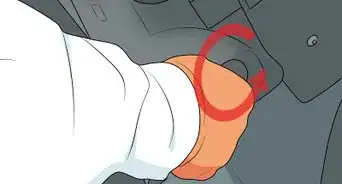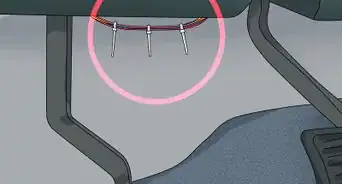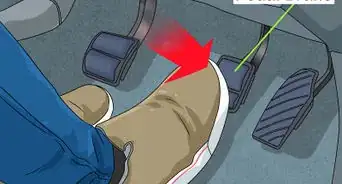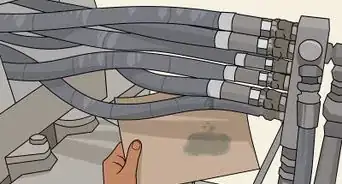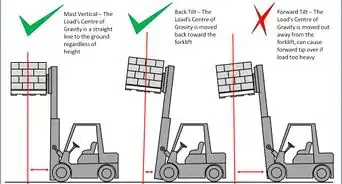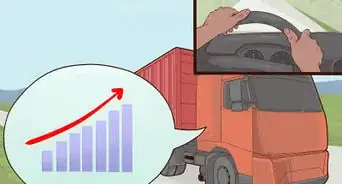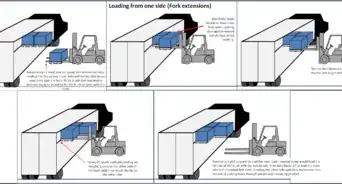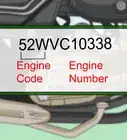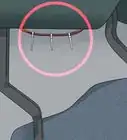This article was co-authored by wikiHow staff writer, Christopher M. Osborne, PhD. Christopher Osborne has been a wikiHow Content Creator since 2015. He is also a historian who holds a PhD from The University of Notre Dame and has taught at universities in and around Pittsburgh, PA. His scholarly publications and presentations focus on his research interests in early American history, but Chris also enjoys the challenges and rewards of writing wikiHow articles on a wide range of subjects.
wikiHow marks an article as reader-approved once it receives enough positive feedback. In this case, 94% of readers who voted found the article helpful, earning it our reader-approved status.
This article has been viewed 404,319 times.
Learn more...
Gas powered engines and diesel powered engines ignite differently. Gas powered engines start when the fuel is ignited by a spark from a spark plug. In contrast, diesel engines are ignited by the heat caused by compression. In a diesel truck, the fuel and air must get hot enough to create combustion, which then creates the spark to start the engine. Because heat is necessary to start a diesel truck, the process for starting it is different than starting a gas engine. Follow these steps to start a diesel truck.
Steps
-
1Turn the key to the start position without turning the engine on. You will see the "wait to start" light on the dash. Do not attempt to start the engine until the light disappears.
-
2Wait for the glow plugs to heat up before attempting to start the truck. Heating the glow plugs takes up to 15 seconds. The "wait to start" light won't go out until the glow plugs are ready. During cold weather, the glow plugs will take longer to heat.[1]
- Check the glow plugs or intake heater before the cold weather season to ensure your truck will start during cold days. A glow plug is a device with a heating element that heats up the air in the diesel truck to start the vehicle. Another method of heating the air is to use an intake heater. In cold weather, your diesel truck won't start without the assistance of 1 of these 2 parts.
- Get new batteries if necessary. Have 2 good batteries in the truck at all times. Diesel trucks have 2 batteries to start the engine and heat the glow plugs. If the batteries are in poor condition, the extra cranking of the engine to try to start it will affect the quality of the glow plugs, flood the engine and run down the batteries to the point that the engine won't start.
Advertisement -
3Start the engine, but allow it to crank for no more than 30 seconds. If the truck doesn't start within 30 seconds, turn the key to the off position.
-
4Attempt to start the vehicle again by heating the glow plugs. This will require turning the key to the on position and waiting until the "wait to start" light goes out again.
-
5Turn the key to the start position and allow the engine to crank for no more than 30 seconds. If the engine doesn't start, turn the key to the off position and try the following:
- Plug the truck into an electrical outlet. Diesel trucks have a 3-prong plug located under the front bumper or grill area. Using an extension cord, plug the truck into an outlet. You will hear the block heater turn on. When the glow plugs or intake heater aren't working properly, your truck won't start because there's no combustion. Plugging the truck in will allow the block heater to create the heat necessary for combustion to start the truck.[2]
- Leave the truck plugged in for at least 2 hours before you try to restart the vehicle. It will take this long to heat coolant in the engine block. If it still won't start, seek the assistance of a diesel mechanic.
Community Q&A
-
QuestionWhat can I do if the truck will not start after filling it with diesel?
 Community AnswerMake sure there's no air in the system. With diesel trucks, you can not have any air running through the fuel lines. Crack and bleed it and pump on the fuel pump (located usually on the side of the engine or on top of the fuel filter, depending on the truck) and keep pumping that out until there are no longer air bubbles coming out through where you've cracked it and there's just fuel coming out. Tighten where you've cracked it and bled it from, and try again.
Community AnswerMake sure there's no air in the system. With diesel trucks, you can not have any air running through the fuel lines. Crack and bleed it and pump on the fuel pump (located usually on the side of the engine or on top of the fuel filter, depending on the truck) and keep pumping that out until there are no longer air bubbles coming out through where you've cracked it and there's just fuel coming out. Tighten where you've cracked it and bled it from, and try again. -
QuestionWhat are the different methods for starting a diesel engine?
 Community AnswerThere are several different options for starting diesels, and the best option for any particular engine depends on the design of the engine and any 'starting aids' it has. For a particular vehicle, your best option is to refer to the owner's manual for starting in various (hot/cold) conditions. If you have problems starting, it may be that the starting aids aren't working properly.
Community AnswerThere are several different options for starting diesels, and the best option for any particular engine depends on the design of the engine and any 'starting aids' it has. For a particular vehicle, your best option is to refer to the owner's manual for starting in various (hot/cold) conditions. If you have problems starting, it may be that the starting aids aren't working properly. -
QuestionI have a 92 C8.3 Cummins 300 hp motor that will start but won't stay running for more than 10 seconds. How do I fix it?
 Community AnswerThis could be any number if things. Combustion is starting the truck, but then it's being inhibited by something, fuel line or battery issues, perhaps. Take it to a diesel mechanic.
Community AnswerThis could be any number if things. Combustion is starting the truck, but then it's being inhibited by something, fuel line or battery issues, perhaps. Take it to a diesel mechanic.
Warnings
- Never use starting fluid on your diesel truck. Starting fluid is for gas engines only and (could harm your truck's pistons or combustion chamber.(If using starting fluid use with caution glow plugs and intake heaters will cause it to ignite early and blow the heads off.)⧼thumbs_response⧽
- Diesel fuel will turn into a gel at temperatures of below -6 to -18 degrees Celsius (21.2 to -.399 degrees Fahrenheit). The engine won't start because the fuel is frozen. If you are in an area with temperatures below these ranges, get your diesel fuel at a gas station that uses additives in the diesel that lower the freezing point of the fuel. The other option is to buy an additive at a truck stop in the area.[3]⧼thumbs_response⧽
References
- ↑ https://youtu.be/Hf-Et-tR41Y?t=25
- ↑ https://www.dummies.com/home-garden/car-repair/diesel-engines/using-an-engine-heater-in-a-diesel-engine-for-cold-weather-starts/
- ↑ https://www.biodiesel.org/using-biodiesel/handling-use/cold-weather-guide
- https://www.military.com/off-duty/autos/getting-diesel-engines-started-on-a-frosty-morning.html
- http://www.ford-trucks.com/forums/1045187-starting-a-diesel.html
- https://phys.org/news/2011-06-myths-diesel.html
